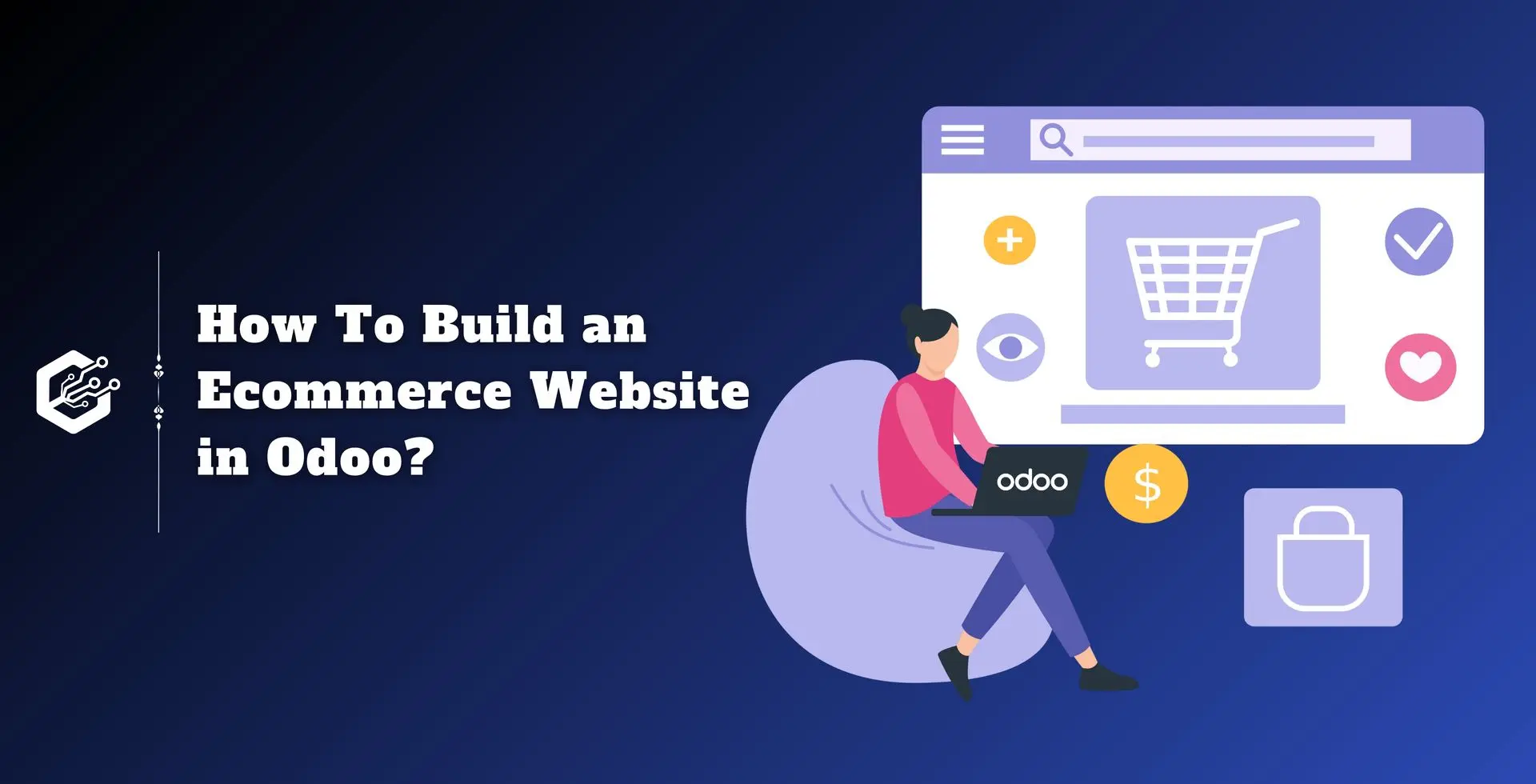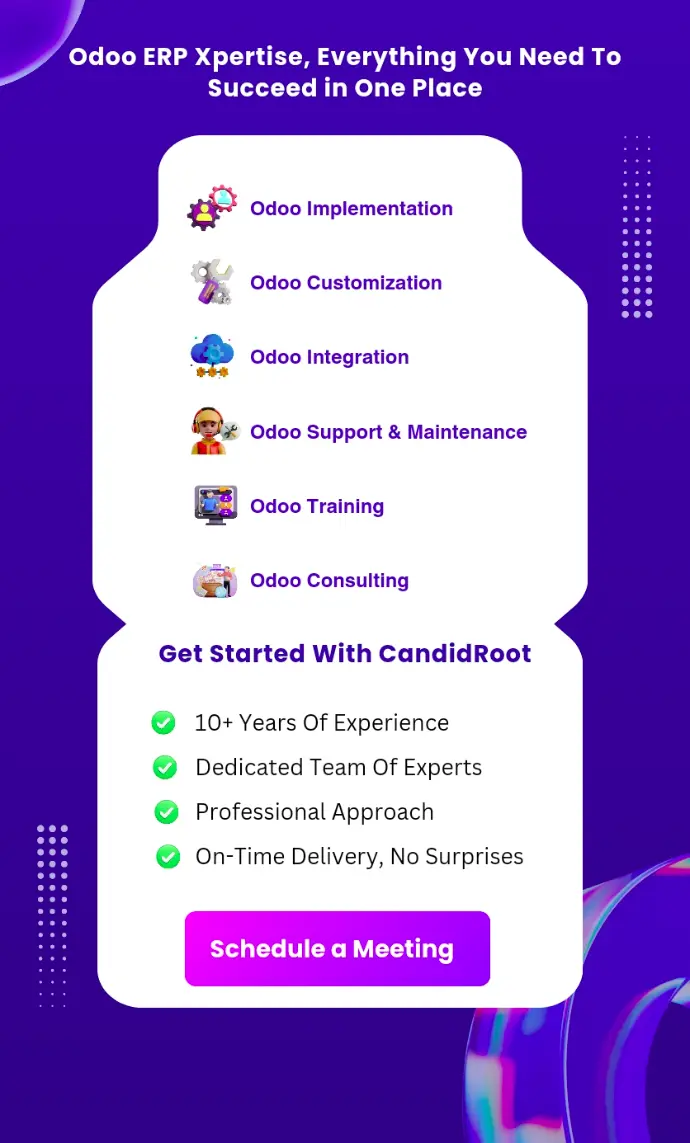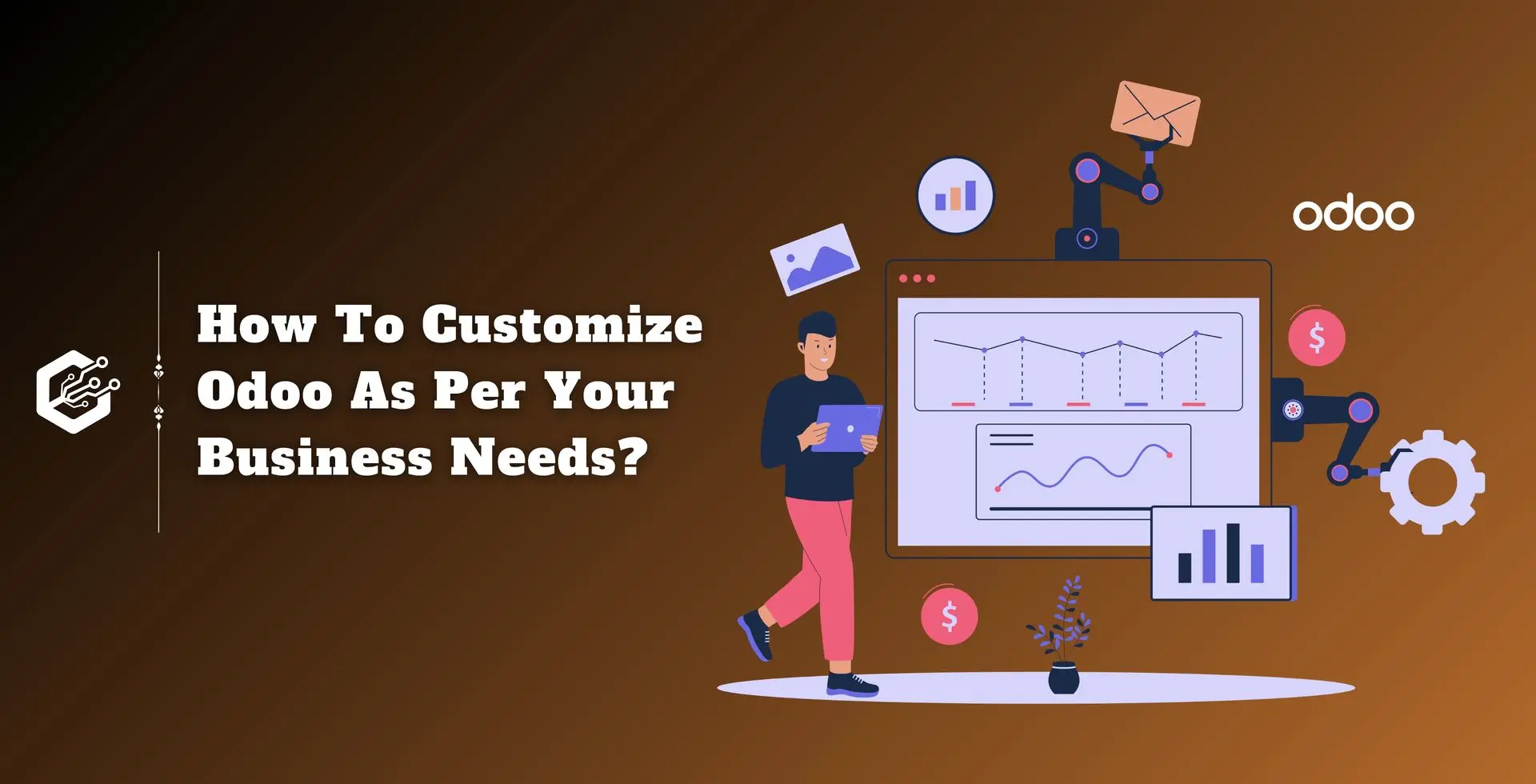Building an e-commerce website in Odoo entails effortlessly creating a fully working online store using the robust Odoo platform. Odoo's modular design offers an adaptable foundation for creating an online store, incorporating necessary functionalities like inventory control and product administration. Using Odoo's e-commerce software you can create product categories and set up shipping and tax options.
Business operations run smoothly because of the platform's smooth interface with other Odoo modules, such as accounting and CRM. The necessary procedures to create and launch your e-commerce website on Odoo will be covered in the below-mentioned points:
Benefits of Odoo eCommerce Website Development
Odoo Enterprise Resource Planning program combines several corporate operations and is one of the most effective tools for creating dependable and expandable eCommerce platforms. This article examines the many advantages of developing eCommerce websites with Odoo.
Smooth ERP Integration
Integrating ERP functionalities is one of the biggest benefits of adopting Odoo for eCommerce development. In contrast to many eCommerce platforms Odoo provides a comprehensive solution that incorporates eCommerce with customer relationship management. This connection minimizes errors and eliminates manual intervention by ensuring a seamless data flow between various business functions.
Odoo can automatically update inventory and alert the relevant team members when an order is placed on the eCommerce site guaranteeing that the back-end operations are managed effectively. Business operations are streamlined, and efficiency is increased with this all-encompassing strategy.
Simple Interface
Another strong reason for using Odoo to create eCommerce websites is its simple interface. The platform is easy to use for both administrators and customers. Whether using a PC or smartphone, users can purchase with ease and enjoyment because of the front-end interface's simplicity and ease of use.
Odoo provides administrators with a simple back-end interface that gives them all the tools to manage orders and more. This ease of use guarantees that organizations can function effectively without requiring a high level of technical competence and lowers the learning curve for new users.
Customization and Flexibility
Odoo is extremely adaptable, allowing organizations to tailor the platform to match their business requirements. Odoo's versatility will enable businesses to create a unique and personalized online store, whether they change the style of their eCommerce site or modify existing procedures.
Odoo's nature allows firms to access the source code and make necessary changes. This level of personalization is critical for businesses that need to offer unique products or provide tailored customer service.
Step by Step Guide to Building Your Odoo eCommerce Website
Step 1: Install the ecommerce module
The e-commerce module must be installed first. Finding and installing a plugin, extension, or built-in tool that offers e-commerce features will depend on the platform you select for your website.
Begin by registering for the platform, going to its dashboard or marketplace, and choosing the e-commerce solution that best fits your requirements. After installation, verify that the module is operational and prepared for configuration. This phase lays the groundwork for your website and allows you to manage products, conduct sales transactions, and build an online store.
Step 2: Configure Your Website Settings
After installing the e-commerce module, set up your website. After linking the domain, change the site title, slogan, language, time zone, and contact details. To protect sensitive client data, ensure your website is secure by using SSL encryption.
Modify additional parameters, such as delivery choices, tax rates, and the currency you use. These preliminary setups are essential to guarantee that your website functions well and satisfies the needs of your target audience.
Step 3: Design Your Website
The following phase is website design, a chance to define your brand's identity. Select a template or theme that complements the goal of your website and alter it to suit your aesthetic.
Make sure your design works properly on desktop and mobile devices by making it responsive. Important material, like your site banner or featured products, should be considered. Your website should be simple for people to use.
Step 4: Add Products to Your Store
Start stocking your store with merchandise as soon as the design is complete. Develop product pages with precise pricing, thorough descriptions, and excellent photos.
If you sell clothes, you may have distinct areas for items for men, women, and children. Don't forget to mention important details like the product's dimensions, materials, and available colors or sizes. Include pertinent keywords in the names and descriptions of your product pages to optimize them for search engines.
Step 5: Set Up e-commerce Features
The next stage is setting up e-commerce tools that improve the purchasing experience. Enable credit card processing and other safe payment channels so clients can finish transactions without concern. Configure shipping choices by defining prices according to weight, delivery time, or location. Provide a variety of shipping options to satisfy varying client preferences.
Add functions such as an integrated shopping cart so that customers may check and change their choices before checking out. You can also provide customer accounts to allow consumers to track orders and record preferences for upcoming purchases.
Step 6: Launch Your Website
Launching your website is the last stage. Before going live, ensure that every website component is tested properly. Verify that all links function properly, that the graphics load without problems, and that the website functions well across various browsers and devices.
After everything is ready, publish your website and inform your audience about the launch through social media or other marketing platforms. After your website launches monitor its performance and make any required adjustments based on analytics and user input.
Conclusion
You can clearly see how to build an e-commerce website in Odoo from the points mentioned earlier. Odoo's simple tools and integrated modules make creating an ecommerce website easy. Regardless of the size of your company, Odoo offers a scalable solution to satisfy your needs for online sales. You can build a polished ecommerce website with the right setup and personalization to advance your business.
Start writing here...


